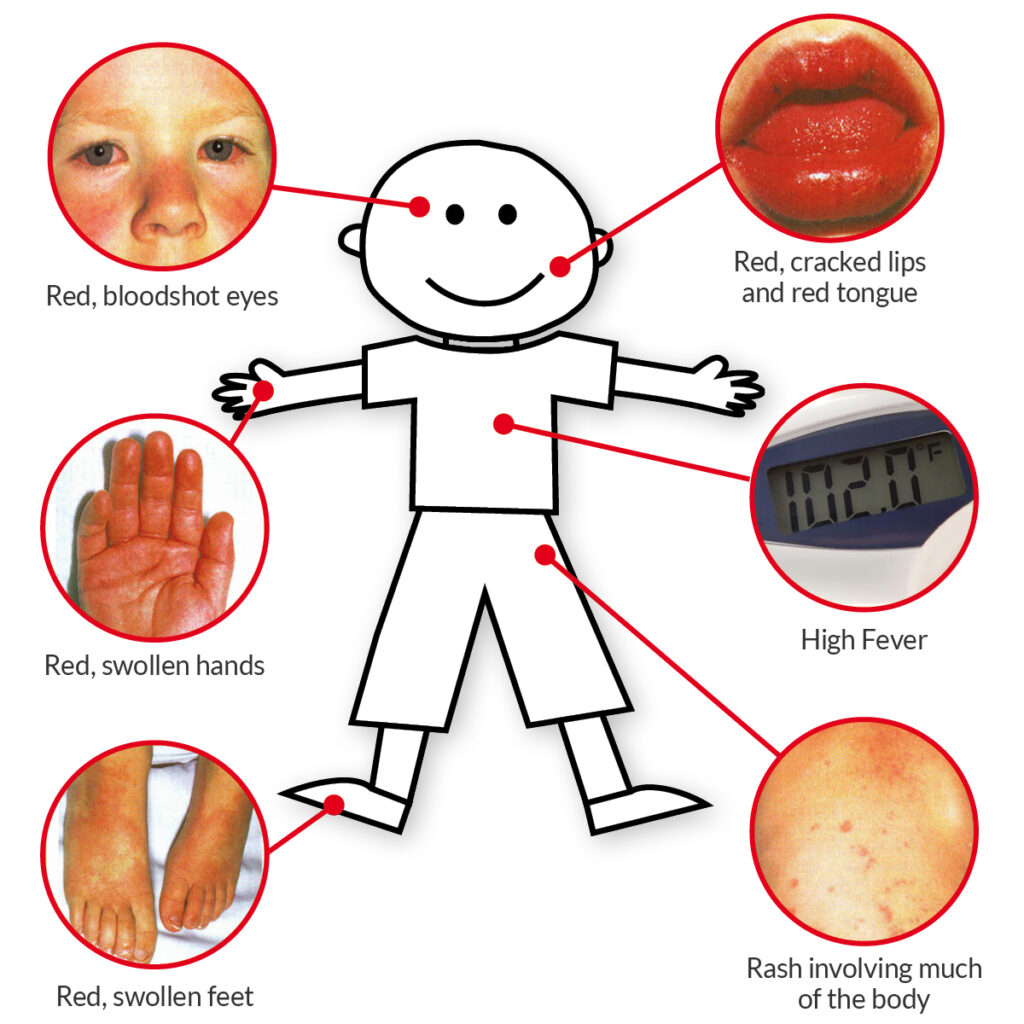Kawasaki Disease in Children: Symptoms, Causes, and When to Seek Help

Understand Kawasaki Disease symptoms, causes, and the crucial signs every parent should know to seek early treatment and protect their child’s heart.
What is Kawasaki Disease?
Kawasaki Disease is a rare pediatric illness that causes inflammation of blood vessels throughout the body. It primarily affects children under the age of 5 and is one of the leading causes of acquired heart disease in children.
Scientific Source: CDC on Kawasaki Disease
Key Symptoms to Watch For
The disease usually progresses in phases. Early diagnosis and treatment are critical to prevent heart complications.
Common Symptoms Include:
- A fever lasting more than five days
- Red eyes (conjunctivitis) without discharge
- Rash on the torso and groin
- Swollen hands and feet with redness of palms and soles
- Cracked, red lips and a “strawberry” tongue
- Swollen lymph nodes in the neck
Additional Resource: Mayo Clinic – Kawasaki Disease
What Causes Kawasaki Disease?
The exact cause remains unknown, but researchers suspect a combination of genetics, immune system response, and environmental factors. It is not contagious, but it may appear in clusters.
When Should Parents Seek Medical Help?
You should seek medical attention immediately if:
- Your child has had a fever for more than 5 days
- Multiple symptoms listed above are present
- You suspect something is wrong even if symptoms are mild — trust your instinct
How is Kawasaki Disease Diagnosed?
There is no specific test. Doctors rely on clinical signs, blood tests, and imaging such as:
- Echocardiogram (to check the heart)
- CRP and ESR (inflammation markers)
Key Takeaways
- Early treatment can prevent long-term heart damage
- Kawasaki Disease is treatable, especially when caught early
- Trust your parental instincts and seek prompt care




